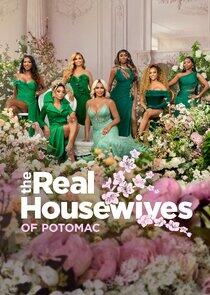British Masters - Season 1

Season 1

Episodes

We Are Making a New World
In a major re-calibration of 20th-century British paintings, art historian James Fox argues that British painting from 1910 to 1975 was an extraordinary flowering of genius. He predicts that art historians of the future will rank the period alongside the Golden Ages of Renaissance Italy and Impressionist France.
Drawing upon the work of Paul Nash, Graham Sutherland, Francis Bacon, Stanley Spencer and David Hockney, among others, Fox explores why, during the 20th century, British painters were often dismissed for being old-fashioned. He reveals how these artists carefully reconciled tradition and modernity, providing a unique creative tension that now makes the period seem so exciting.
Over the course of the three-part series, Fox presents his theory that this period of artistic excellence was closely linked to a dramatic shift in Britain's fortunes. He suggests that the demise of the British Empire, as much as the two world wars, defines Britain's unique take on modern art: a determination to rediscover and cling on to 'Britishness' while the country's territorial assets and global influence fell away.
In the years immediately before and during the First World War, a radical generation of painters determined to eject Victorian sentimentality and nostalgia from their art pioneered a new style of painting that would capture and make sense of the modern experience. Walter Sickert shocked the public by making the low-lives of Camden Town and a brutal murder the subject of his gaze. Wyndham Lewis and David Bomberg broke with centuries of realist tradition, reducing humanity to cold geometric forms. But as the country descended into war, three painters - Christopher Nevinson, Paul Nash and Stanley Spencer - reconciled what was best of the avant-garde with Britain's rich painterly tradition to create powerful images of war that would speak to us all.

In Search of England
The inter-war years were a period of alarming national change. With a generation of youth lost to the trenches and the cracks in the Empire growing fast, the nation's confidence was in tatters. If we were no longer a mighty Imperial power, what were we? John Nash's mesmerising visions of rural arcadia, Stanley Spencer's glimpses of everyday divinity, Alfred Munnings' prelapsarian nostalgia, Paul Nash's timeless mysticism, John Piper's crumbling ruins, even William Coldstream's blunt celebration of working-class life - all, in their own way, were attempts to answer this question. And, as a reprise of war grew ever more likely, they struggled more urgently than ever to create an image of Britain we could fight for.

A New Jerusalem
In the decades after the Second World War, at a time when many had lost their faith in humanity, British artists turned to the great figurative painting tradition to address the biggest questions of all: what does it mean to be human and how do we create a more humane world? Such existential angst is captured in Lucien Freud's harrowing early portraits and Graham Sutherland's Pembrokeshire landscapes. Francis Bacon stared deep into his own soul to explore the human capacity for evil, while Richard Hamilton warned against the false hope of consumerism. As national pessimism gave way to a new optimism, David Hockney dared to suggest Paradise might be available to us all. But in the early 1970s, just as the world finally began to recognise the genius of Britain's painterly tradition, young artists at home turned against it.
Recently Updated Shows

The Creep Tapes
Based on a collection of videotapes in the secret vault of the world's deadliest and most socially uncomfortable serial killer, who hires his victims to film him for the day under false pretenses, each episode exposes a new victim from one of the fabled 'Creep Tapes'.

America's Funniest Home Videos
ABC's longest-running primetime entertainment show, America's Funniest Home Videos, returns for season 36 this fall with the same mission -- giving families something genuinely funny to enjoy together on Sunday nights.
"AFV," the longest-running primetime entertainment show in ABC history, returns for season 36 with the same mission - to provide viewers with hysterical moments that fly by at a dizzying pace.

The Real Housewives of Potomac
Just up the river from our nation's capital lies a hidden gem—Potomac, Maryland. Its rolling hills, gated mansions, sophisticated prep schools, and exclusive country clubs all serve to keep the area invitation-only. Sprinkled throughout this community are a handful of old-line, wealthy African-American families who have historically broken racial barriers to provide a life of privilege for their children. The Real Housewives of Potomac follows the upscale lives of six intriguing, well-to-do women: Gizelle Bryant, Katie Rost, Karen Huger, Charrisse Jackson-Jordan, Robyn Dixon, and Ashley Darby, all of whom have fought for their places in this society by way of legacy or marriage. In a town where entry is granted only through class, pedigree, and lineage, how far will these ladies go to secure their spot at the top of this prestigious circle?

The Traitors Canada
Follow a group of contestants – including some familiar faces – who live together as they complete a series of challenges with the goal of earning a cash prize. The catch? Some of the contestants are traitors who will attempt to deceive and manipulate their way to the prize instead of sharing it amongst the group. In this psychological adventure will the traitors be unmasked in time?
